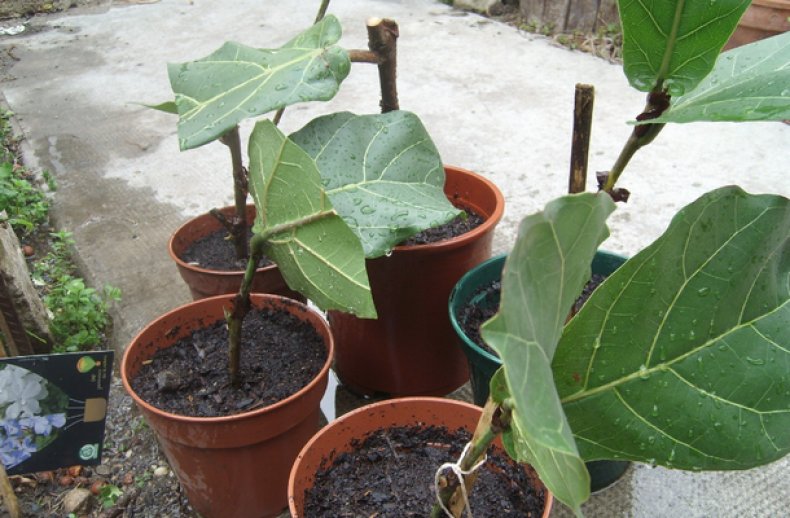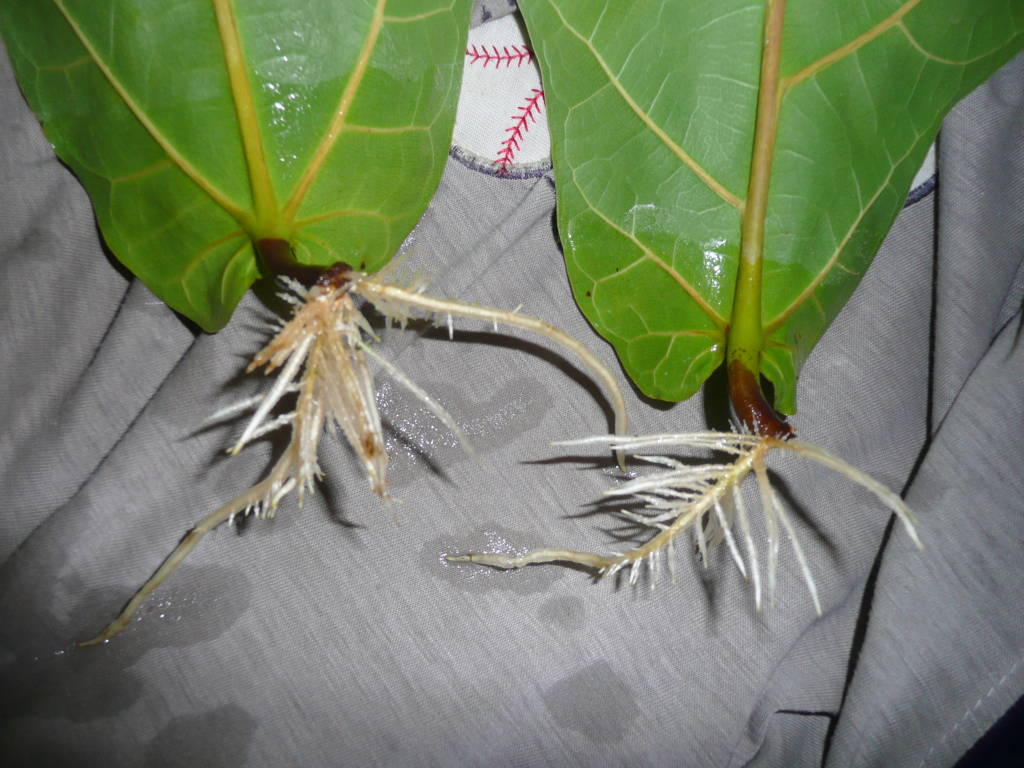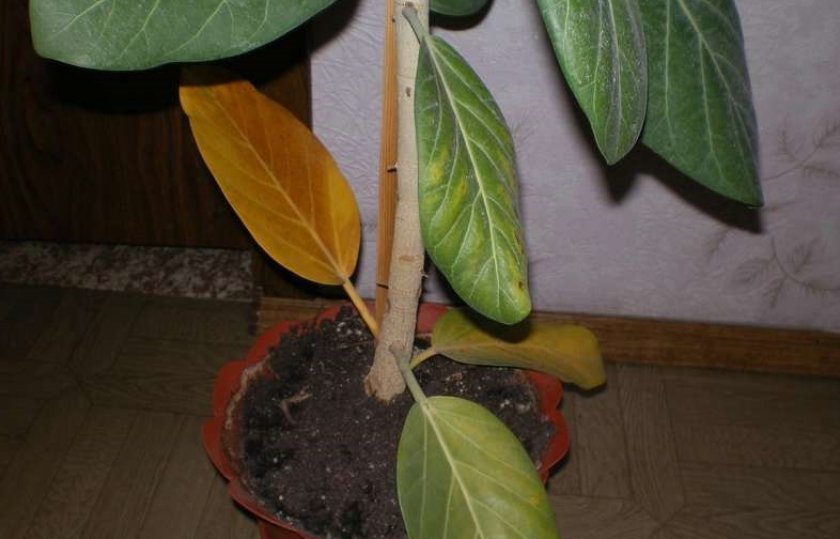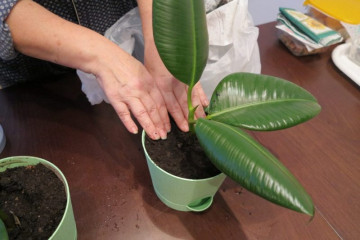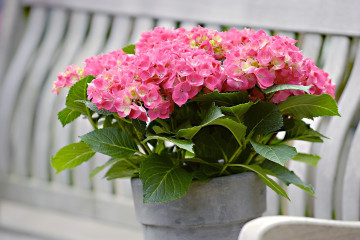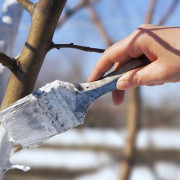Ficus lyre - home care
Content:
One of the most popular plants among florists is ficus. Among the variety of varieties, you can leave your choice on lyre ficus.
What does the Lyre Ficus look like, which family does it belong to?
Ficus lyre (Latin ficus lirata) belongs to the mulberry family. It is an evergreen deciduous plant. It can reach a height of 2.5 m. The trunk is straight, the leaves are large, up to 45 cm long. Smooth to the touch. The foliage looks very beautiful and decorative.
Common varieties
Most often you can find ficus varieties:
- Columnaris is a tall variety;
- Little Fiddle - medium in height;
- Bambino - undersized
- Phyllis Craig is a cultivar with a compact crown.
The last two are best suited for planting at home. The homeland of the lyre ficus is West Africa. The plant grows in tropical forests.
Features of caring for a flower at home
Unlike most varieties of ficus, this variety is demanding to care for.
Temperature
Lyre ficus belongs to heat-loving plants. In summer, the room temperature should be at least +25 ℃. In winter, it is sufficient to maintain it at a level of 17-22 ℃ above zero.
Lighting
Good lighting at home is the key to the successful cultivation of this species of ficus. The pots are best placed on east-facing windows. Bright sunlight is detrimental to the plant, and on the eastern windows there is soft diffused light.
Watering
Depending on the time of year, the features of watering will differ. In winter, the amount of irrigation is reduced. In summer, on the contrary, watering should be abundant and frequent. Water before irrigation is defended within 24 hours. If watered with undisturbed water, white streaks will begin to appear on the leaves.
Spraying
A lot of dust accumulates on the leaves, which is why regular spraying and wiping is necessary. You need to clean them from dust several times a week. Wipe more often in the summer.
Humidity
Since lyre ficus is a tropical plant, it needs high humidity (at least 70%). To increase the humidity, the pot can be placed in a tray with damp expanded clay, often wipe the leaves with a sponge or use a humidifier.
Priming
Ficus soil composition:
- sod land (3 parts);
- peat (1 part);
- coarse river sand (1 part).
Before planting, all ingredients are thoroughly mixed to obtain a homogeneous mass.
Top dressing
Caring for ficus lyre at home involves regular feeding. Fertilizers are activated during the period of plant activity, which lasts from March to September. They are brought in twice a month. Fertilized with dressings for ficuses or decorative deciduous crops.
Features of care in winter, dormant period
In winter, care for the ficus lyrata is different.During this period, no additional fertilizing is applied and the amount of watering is reduced. They also rearrange the flower to another place if it is very cold near the windows or the wind is blowing.
When and how it blooms
At home, ficus does not bloom. The plant can bloom only in its natural environment or in a botanical garden. Inflorescences can sometimes not even be noticed. Ficus lyrata grows only upward and is a fairly tall erect plant. Not all growers may like this. In order for the ficus to give lateral shoots, it must be cut off. To do this, the top of a flower, whose height has reached 70 cm, is cut over one of the internodes. Thus, the formation of the crown is ensured.
How the lyre ficus reproduces
There are several ways to reproduce ficus at home.
Germinating seeds
It is impossible to get seeds at home. You can only buy them. How to propagate by seeds:
- before planting, the planting material is soaked in water;
- after a few days they are planted in the ground;
- sprinkle with water and cover the pot with foil;
- shoots should appear in about 10-14 days;
- then the film is removed.
Rooting cuttings
Before cutting the cuttings, the soil is weeded with high quality so that the plant is saturated with water. Start landing the next day. Planting ficus by cuttings:
- A powerful shoot is chosen for the cutting.
- Cut it off at a 45 degree angle.
- The lower leaves are cut off, leaving 2-3 upper ones.
- The stalk is placed in a glass of water so that the juice comes out of it.
- Then they are dried.
The stalk can be left in water and wait for the roots to appear. Then transplant into the ground. Or immediately plant it in the soil and do not forget to water it regularly.
Air layering
How to propagate by air layering:
- choose the location of the layering;
- from the top of the plant should be at least 60 cm;
- at this point, the leaves are cut off and two cuts are made (the distance between them is at least 3 cm);
- the incisions are treated with a root formation activator;
- then the place is wrapped in moss.
A scion should appear in a few weeks. There are no other ways to reproduce ficus.
Transfer
Ficus grows very quickly, so it will have to be transplanted often. A transplant is carried out in the second decade of April. The process involves the following:
- remove the plant from the pot, cut off all the roots that began to grow up;
- remove rotten roots;
- the new capacity must be 30% larger than the previous one;
- part of the soil is poured into the pot and the plant is placed;
- fill the container with soil and tamp it slightly.
At the end of the transplant, be sure to watered with plenty of warm water. Wood ash or vermicompost is added to the water.
Possible growing problems and diseases
If not properly cared for, the ficus will hurt. It is because of improper care or lack of it that problems most often arise.
Drops buds and leaves
The reason for shedding foliage is low humidity. In this case, they also turn yellow. Leaves should be wiped and sprayed more often. A container with wet expanded clay is placed next to it.
Leaves turn pale
If the leaves turn pale, then the plant does not have enough sunlight. In this case, it is rearranged in the sun. Leaves can turn pale due to chlorosis. Spraying with ferovit will help cure the disease.
The tips of the leaves dry
If the tips begin to dry after transplanting, then the roots have been damaged. Also, the reason may be in dry air or there is not enough potassium in the soil.
The lower leaves fall
The lower leaves can naturally fall off if they are old. Foliage falls off in the fall or early winter as part of the natural process of deciduous canopy.
Pests
Ficus pests:
- spider mite (spray with drugs vertimek, maurik);
- orange aphid (spray with a decoction of tobacco and soap);
- shield (wipe with alcohol and rinse the foliage under the shower);
- mealybug (treat the plant with fungicides).
Insects are often the cause of disease.
Other problems
Another problem when growing ficus is disease:
- gray rot;
- sooty mushroom;
- powdery mildew;
- cercosporosis;
- root rot.
To fight diseases, plants are sprayed with fungicides. With powdery mildew, wiping the foliage with soapy water helps.
Signs and superstitions
According to legends, the ficus brings money to the house. It is also believed that this plant helps women to endure pregnancy more easily and give birth to a healthy baby.
Lyre ficus is a beautiful houseplant that needs regular maintenance. He is picky about the conditions of detention. Observing the rules of care - the plant will never hurt.

